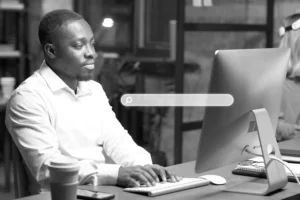As you explore the vibrant world of branding and design, it’s crucial to understand how cultural and geographical aspects affect logos. If you’re reading this in Nigeria, you know your country’s unique culture, traditions, and landscapes. These aspects that establish your identity shape logos that resonate with you and Nigerians.
This article explores logo design and how cultural and regional factors shape brand visuals. You’ll learn how logos express meaning, evoke emotions, and link organizations to their audiences through the complex relationship between logos and culture.

Importance of logo in branding
Logos guide your decisions in an environment where every firm wants your attention. Logos appear on items, billboards, websites, and social media daily in Nigeria and everywhere. Have you ever wondered why these symbols are so powerful in branding? Let’s explore logos’ enormous impact on consumer experience.
Logos are more than aesthetic marks—they define a brand. Consider it a company’s face, embodying its ideals, promises, and personality. Nike’s swoosh and McDonald’s golden arches evoke quality, reliability, flavour, and speed. Businesses intentionally create these associations to leave a lasting impression. Below are some other roles of logos for brands.
1. Great first impression
Consider that the logo is generally the first thing you see about a new product or service. It’s the first handshake, song chord, or story sentence. Logos may capture your interest, excite your emotions, or make you instantly trust a brand. Imagine browsing a shoe store for shoes. Your confidence and familiarity return when you see a familiar logo. This is the power of a good logo.
2. Creates recognition and loyalty
Millions of people like you feel strongly about brands through their logos. Consider your trusted and sought-after brands. Chances are, their logos influence your choice. These logos guide you through a sea of consumer choices as trusted companions. In a world of choices, they offer stability and reliability.
3. Acts as a universal language
Logos’ capacity to cross languages and cultures is astounding. A well-designed logo may convey a brand’s spirit to anybody, regardless of language. Nigerian consumers may like logos from other countries even if you’ve never been abroad. These universalities demonstrate the potential of logos-based visual communication.
How does culture influence the evolution of logo design?
Logo design is more than just making pretty symbols. Culture influences logo design in this delicate ballet between art and culture. As someone interested in logo art, you’ll like studying how culture shapes these symbols.
The traditions, values, and symbols that define each culture are rich. Logos often incorporate cultural components, giving them deep meaning. Whether in Nigeria, where lively traditions flourish, or elsewhere, you’ve undoubtedly met logos that appeal to your cultural sensitivities. These logos are designed to resonate with you culturally.
Logos understand culture’s visual language. Logos influenced by specific cultures use symbols, colours, and design aspects that convey cultural feelings. African business logos may use traditional patterns, motifs, or wildlife to honour the continent’s rich heritage. These features tie the brand to its culture and you to familiarity.
Imagine shopping for a product or service and seeing two logos: one with cultural characteristics you like and one that feels foreign. Which one will you trust and pick? You’ll likely choose the logo that matches your culture. This is a global consumer trait. Culture strongly influences brand perception and trust, making it a significant force in logo design.
Logo design evolves with culture. As you noted, logos can change to reflect changing cultural values. Consider how iconic worldwide brand logos have changed throughout time. You’ll likely see a careful balance between cultural heritage and modern aesthetics while maintaining relevance to shifting customer preferences.
Read also: How to Hire a Logo Designer
Cultural impacts on logo design
Logos aren’t formed in a vacuum. They are firmly rooted in their cultures and the different populations they serve. The rich tapestry of civilizations worldwide shapes logo aesthetics, meanings, and success.
Logo aesthetics and cultural diversity
Consider the vast cultural diversity worldwide and in Nigeria. Each culture has its symbols, colours, and designs. These features provide logos and cultural aesthetics that appeal to specific audiences. Logos using traditional patterns, motifs, or calligraphy instantly transport you to a particular culture.
Values and symbols in culture
Cultural values and symbolism underpin many logos. Depending on culture, these values may include community, family, tradition, or innovation. In Nigeria, where community ties are substantial, logos frequently express togetherness and identity. You recognize such logos and relate to their ideals.
Consider the emblem of a famous Japanese electronics brand. Japanese culture values simplicity and elegance; thus, its design is minimalist. Logos for Native American businesses commonly feature native symbols to honour their ancestry and connect with their communities. These examples show how culture influences logo design.
Cultural influences can give logos depth and resonance but must be handled sensitively. Misrepresenting or appropriating culture can cause a backlash. Thus, designers and marketers must research and work with cultural specialists to ensure their logos are courteous and reflect the intended cultural influences appropriately.
Regional logo design influences
As you learn about logo design, culture isn’t the only factor influencing these visual signals. Regional considerations also shape logos, giving them a local flavour. Understanding how regional factors affect logo design enhances your enjoyment of these iconic icons, whether in Nigeria or elsewhere.
Design preferences by region
Regions have different design tastes and trends like civilizations. Imagine how different European logos are from Asian or African ones. Geography, climate, and nature affect these variations. Logos in tropical places may use brilliant colours and imagery of lush landscapes, whereas those in arid settings may use earthy tones and minimalist designs.
Local traditions and history
Historical events and local traditions also shape logo design. Northern Nigerian business logos may be inspired by Hausa or Fulani art styles, expressing their culture. Coastal logos may also incorporate marine history or indigenous customs.
Consider McDonald’s and KFC logos. Their emblems commonly include stars and stripes, emphasizing their American identity. Japanese automakers like Toyota and Honda use their regional design tradition to create emblems with clean lines and precision.
Balancing regionality and global appeal
Logos must blend regional distinctiveness and global appeal in today’s interconnected society. Many international firms modify their logos for different locations while preserving their instantly recognizable components. This versatility lets them reach local and global consumers.
9 Tips for creating culturally and regionally sensitive logos
- Before writing or clicking, do your research. Know your audience’s culture and region. Which symbols, colours, and designs represent something? What should you avoid to avoid cultural mistakes?
- When possible, work with local logo designers or cultural specialists. Their advice might help you create a culturally sensitive logo that resonates with your audience.
- Balance cultural and regional aspects with a modern design. Your logo should be timeless and relevant.
- Steer clear of preconceptions and clichés. Use cultural symbols properly, not as caricatures or gimmicks.
- Study language and typography. Make sure your logotype is legible and culturally suitable. Avoid misinterpretations in different languages.
- Effective logo design starts with market research. Know your audience’s demographics, psychographics, and preferences. What interests them? What are their values and goals?
- Examine your competitors’ logos. Which messages are they sending? How can design differentiate your brand while staying industry-relevant?
- The logo design should last, but trends can inspire. Focus on producing a logo that lasts, not the latest trends.
- Check your logos with focus groups or polls. Get input from your target audience to see if your logo connects.
4 tips for international market logo adaptation
- Consider localization while growing internationally. This may require changing your logo to reflect local tastes, values, and customs.
- If you design regional logos, make sure they have a basic element. Brand recognition depends on this essential factor.
- Consider language disparities. Your logo may need to be modified to preserve aesthetic consistency between languages and scripts.
- Consider trademark and copyright rules in each market you enter. This may only work in some regions owing to legal constraints.
Read also: Logo Design Pricing in Nigeria
Future trends in logo design
As you explore the ever-changing world of logo design, remain ahead of the curve. Branding changes with customer behaviour, technology, and design aesthetics. Below are some future logo design trends and how to prepare for them.
- Minimalism: Minimalism is growing in popularity and will undoubtedly shape logo design. Designers strive to portray a brand’s spirit through the simplest and most fundamental features. Expect clean lines, simple layouts, and negative space in logos.
- Digital-age dynamic logos: In a world of digital platforms and social media, static logos are becoming dynamic. Logos that morph, animate, or respond to user activities make brand experiences more memorable. These dynamic logos transform a brand’s identity into more engaging and relevant.
- Handmade Logos: Handmade and authentic are gaining popularity among digital cacophony. Handcrafted logos with flaws and characters are returning. These logos reflect craft, personal touch, and authenticity, compelling viewers who want to connect with brands’ genuine people and stories.
- Environmentally friendly designs: Global sustainability and eco-consciousness are influencing logo design. Brands increasingly employ logos to express their environmental concern. Companies want to connect with environmentally concerned consumers like you, so expect logos with natural components, earthy colours, and eco-friendly symbols.
- Flexible logos for multi-platform branding: Versatility is essential for brands to be present across media and platforms. Logos are changing to accommodate cellphones, wearables, billboards, and packaging. More responsive logos will scale and adapt to varied circumstances.
- AI and generative design impact: Artificial intelligence and generative design techniques are influencing logo design. These technologies can analyze massive data sets and user preferences to create logos that appeal to specific audiences. While human creativity is vital, AI may improve design and provide insights.
Final thoughts
I’ve seen logos impact brands and connect with people. Logo design is broad and ever-changing. Logos tell stories, capture essences, and evoke emotions. Creativity, cultural appreciation, and invention are involved.
As a logo designer in Lagos, I help fledgling entrepreneurs define their brands, or mature businesses find a new identity. Let’s create a logo that sticks out in the Nigerian market and resonates with people worldwide.




